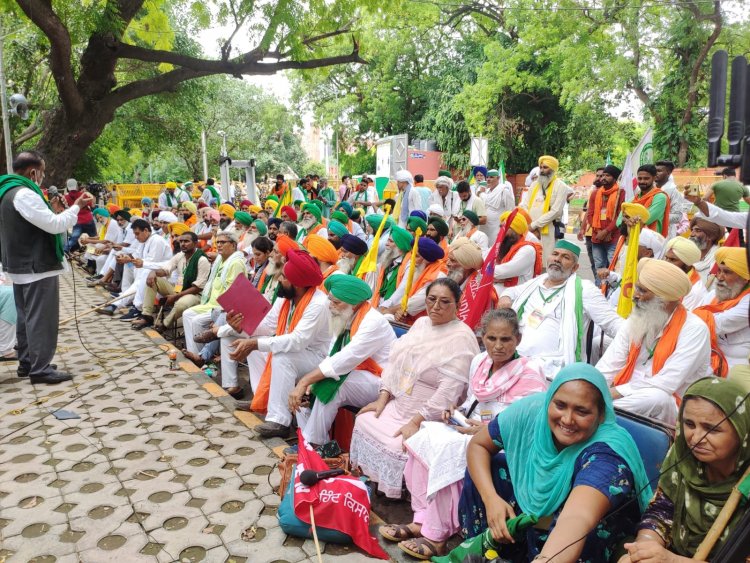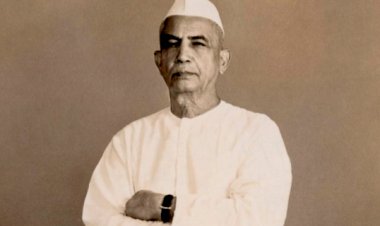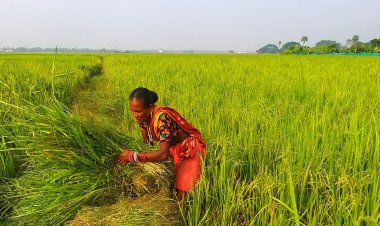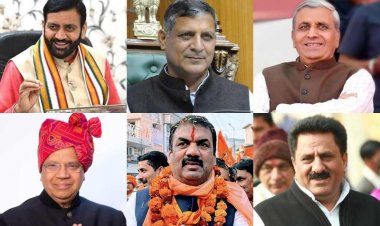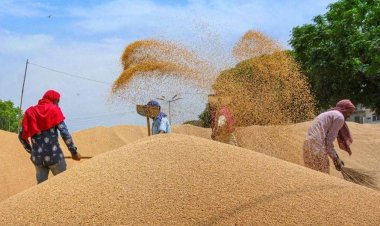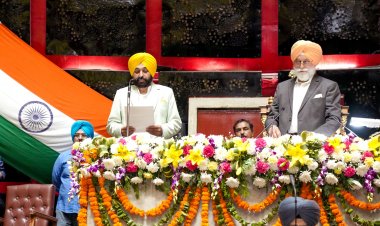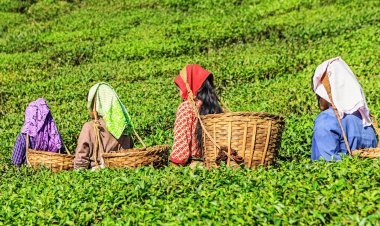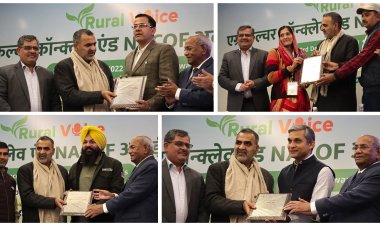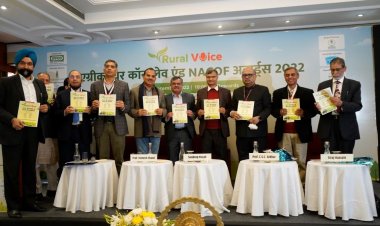Relevance of Dr Ambedkar’s ideas of “Educate, Agitate and Organize” today
The solution to the present crisis of social divide, religious divide, poverty, unemployment, marginalization, exclusion and voicelessness in rural areas in general and in the farming class in particular lies in the adoption of the trinity of ‘Educate, Agitate and Organize’ (EAO) propounded by Dr BR Ambedkar. The farming class will become further depressed, oppressed and suppressed if Ambedkar’s trinity is not put into practice
The solution to the present crisis of social divide, religious divide, poverty, unemployment, marginalization, exclusion and voicelessness in rural areas in general and in the farming class in particular lies in the adoption of the trinity of ‘Educate, Agitate and Organize’ (EAO) propounded by Dr BR Ambedkar. The farming class will become further depressed, oppressed and suppressed if Ambedkar’s trinity is not put into practice. This article discusses how EAO can work as a solution.
Dr Ambedkar could read between the lines that without adopting a systematic approach of awakening, it was difficult for the depressed people to fight against the Brahminical Social Order (BSO) that prevailed in society on a caste basis. The rationale behind EAO was as follows: For any movement to be successful, people must be educated to understand the reasons for their deprivation from social, economic and political angles. An educated and trained mind can understand and analyze the facts for taking action in a desirable direction. Here, ‘educate’ stands for formal education for the deprived as well as for understanding the reasons/factors/circumstances responsible for their marginalization and disempowerment. After educating themselves, their mind would ‘agitate’ why such treatment had been given to them, their family and community. The word is thus related to a sort of mental revolution and not any sort of physical violence. It would be the second stage in the form of ‘agitate’. In other words, a revolution of thoughts is needed to go ahead towards the third stage in the form of ‘organize’ through the agitation of mind because the educated minds would come together to act collectively. If people are not organized on proper thoughts, there is unlikely that their grievances would be addressed by the prevailing system. The idea of EAO, which was effectively used in India for the upliftment of the Dalits, who earlier suffered from three-pronged untouchability in the form of exclusion, humiliation and exploitation, is also very relevant in the present context of the plight of the farmers.
Present plight of farming class
There are no two opinions that the farming class has been relegated to a corner due to not knowing their economic status as compared to others and due to not applying Ambedkar’s strategic idea of EAO. It is known that about 68 per cent of India's population live in more than 6 lakh villages. Umpteen promises have been made for the development of farmers and rural areas but practically, the conditions of farmers and labourers are still very serious. This is in contrast to urban expansion in the forms of cities and towns that have more amenities and economic opportunities than rural areas. Population projections estimate that even in 2050, about three decades ahead, more than 50 per cent of India's population will be residing in rural areas.
In this context, the transformation of the rural economy is very important for the development of not only the villagers but also the Indian society. Low per capita income on account of high dependence on low productivity and low-paying employment in agriculture is a cause for concern nowadays. There is also an income disparity between rural and urban workers. The rural worker's income is less than one-third of the urban worker’s. Rural India requires a strategy that can shift workers from agriculture to non-agriculture sector having labour-intensive, micro, small and medium enterprises for employment generation. Besides, there are problems related to the social sector. Denial of basic services like health and education to a large proportion of the rural population, the marginalization, exclusion and voicelessness of the poor and marginalized, and the deterioration of the physical environment are very serious problems and need to be looked into closely for the development of the country.
The problem of poverty is also a serious issue in the rural areas, which is evident from the fact that 25.70 per cent of the rural population live below the poverty line whereas in urban areas this figure is merely 14 per cent. Obviously, the problem is more serious in rural areas than that in urban areas. The seriousness can be markedly felt in Chhattisgarh (44.61%) followed by Jharkhand (40.84%), Arunachal Pradesh (38.93%), Manipur (38.80%), Odisha (35.69%), Bihar (34.06%), UP (30.40%) and so on. As for poverty among three social groups, namely Scheduled Tribes (STs), Scheduled Castes (SCs) and Others, it is the highest among STs (47.3%) followed by SCs (42.2%) and Others (28%). Across the states, it is found that except in Assam, poverty in all states is more among STs followed by SCs. The disturbing fact is that more than half of the STs in Madhya Pradesh (61.9%), Maharasthra (51.7%), Jharkhand (51.2%), Uttar Pradesh, and nearly 70 per cent in Bihar and Chhatisgarh are living below the poverty line. In Uttar Pradesh, 49.8 per cent of the STs and 53.6 per cent of the SCs are living below the poverty line.
The marginal category of land holdings has been increased to 67.10 per cent in 2010-11 from 62.9 per cent in the 2000-01 Agriculture Census. In contrast, the share of other categories has been coming down. It implies all the operational holdings are uneconomic and given this, how can these provide proper irrigation facilities, proper input provisions and proper marketing of produces? The main issue is agrarian distress and diminishing interest in farming by the farmers because the farmer earns less than 33 per cent of what the non-farm worker does. This is not only creating distrust among the farmers but also has serious ramifications for the food security of the country. Even seven decades after Independence, more than 30 per cent area is under traditional varieties due to poor extension, missing link with the supply chain of quality seed and quality plant propagation material, and low availability of institutional credit in many states. In 2017, Professor Ramesh Chand observed that fruits and vegetables, which have much higher productivity as compared to other crops, are cultivated in less than 10 per cent area.
Relevance of EAO strategy in the present context
The main issue of the above state of affairs of agriculture is the severe lack of knowledge of issues impinging on agriculture and rural areas. Hence, there is a need to ‘educate’ people about their present status and the processes of their exploitation. Obviously, when people do not know the facts of their exploitation, there would not be agitation in their minds in terms of what to do to avert the situation. The answer naturally comes that without a proper organization of the sufferers, such serious issues would not be addressed. So, what is required is in this context is being explained below.
There is a great role of the educated among the farmer class to make efforts to make farmers and their associates aware of the process of their exploitation. The main factor in this regard is the different castes in this class. These castes must not come into conflict with each other. This class must be taught to know their enemy and the process of their exploitation. There are various icons of the farmers like Mahatma Phule, Sir Chhotu Ram, Ch. Charan Singh, Vijay Singh Pathik, BP Mandal, Karpuri Thakur, Kanshi Ram and so on. The farmers should be apprised of what these icons have done for them.
I have been told that Sir Chhotu Ram used to say that there were two classes: Kamera (contributors, producers and here the farmers) and Lutera (those who accumulate wealth without any physical contribution). So, all the Kameras must come on one platform and assert themselves from there. Similarly, Ch. Charan Singh was for the annihilation of castes and wanted special treatment to those officials who went for inter-caste marriage. In a nutshell, the Kamera class must understand who their exploiters are and all components (castes) of the Kamera class must be one. There must not be any conflict among the different castes of the farming class. If this happens, it will definitely strengthen the edge of the struggle because then the battle would become a thing of joy. That framework has to be built in the mind of the farming class. An Academy of Capacity Development for Farmers and Allied Workers may be established that would be managed by concerned and competent persons of this class.
When the farming class becomes educated, this will agitate their minds to get organized in order to address their issues and reach a solution. Ambedkar established the Bahishkrit Hitkarini Sabha in 1924 for the education of the deprived. One such model — the present Kisan (farmers’) confederation — may take up this task. This is very relevant in the context of Uttar Pradesh (UP), where Assembly elections are around the corner. Various political parties having a majority of farmers should understand that elections need to be contested keeping in view class identity and not caste identity. This would also be instrumental in forming social capital, which in turn brings about better coordination and cooperation among the people of this class. BSO would try to bring castes to the fore but the organized farming class should not allow this to happen.
To conclude, the intellectuals of the farming class must come together and develop course material for imparting training on the process of exploitation, freedom struggle, freedom and entitlements, human rights, the Constitution and its implementation, etc.
(The author is a former officer of the Indian Economic Service. The views expressed here are personal)



 Join the RuralVoice whatsapp group
Join the RuralVoice whatsapp group